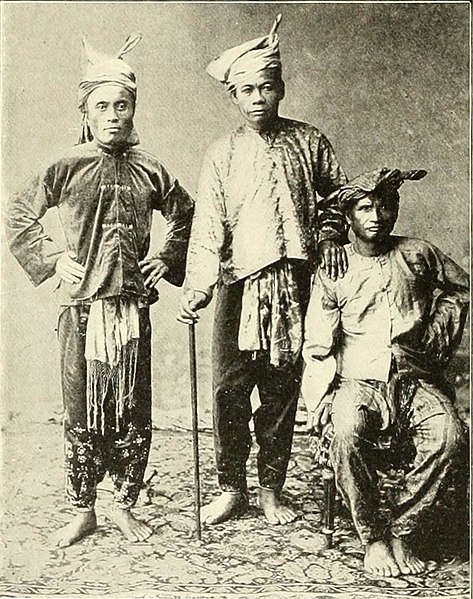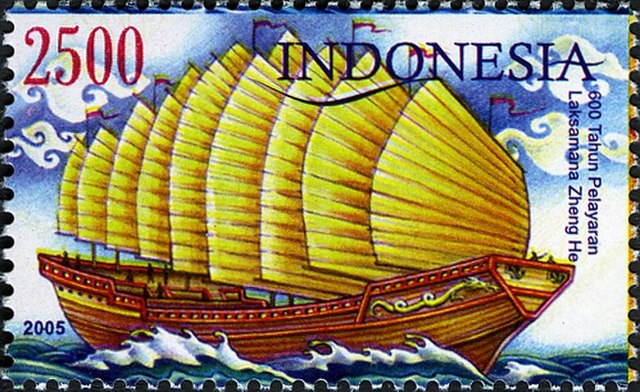The Tausūg, are an ethnic group of the Philippines and Malaysia. A small population can also be found in the northern part of North Kalimantan, Indonesia. The Tausūg are part of the wider political identity of Muslim Filipinos of western Mindanao, the Sulu archipelago, and southern Palawan, collectively referred to as the Moro people. The Tausugs originally had an independent state known as the Sultanate of Sulu, which once exercised sovereignty over the present day provinces of Basilan, Palawan, Sulu, Tawi-Tawi, Zamboanga City, North Kalimantan and the eastern part of the Malaysian state of Sabah. They are also known in the Malay language as Suluk.
Tausug woman in a pangalay dance.
The chieftains of Sulu, from The Philippine Islands (c. 1899).
Tausūg horsemen in Sulu, taken on 30 December 1899.
Mat Salleh (marked with an "X"), a Bajau-Suluk warrior widely known in North Borneo (present day Sabah).
Islam in the Philippines is the second largest religion in the country, and the faith was the first-recorded monotheistic religion in the Philippines. Historically, Islam reached the Philippine archipelago in the 14th century, through contact with Muslim Malay and Arab merchants along Southeast Asian trade networks, in addition to Yemeni missionaries from the tribe of Alawi of Yemen from the Persian Gulf, southern India, and their followers from several sultanates in the wider Malay Archipelago. The first missionaries then followed in the late 14th and early 15th centuries. They facilitated the formation of sultanates and conquests in mainland Mindanao and Sulu. Those who converted to Islam came to be known as the Moros, with Muslim conquest reaching as far as Tondo that was later supplanted by Bruneian Empire vassal-state of Maynila.
Mosque in Isabela City
Stamp of Indonesia commemorating Zheng He's voyages to secure the maritime routes, usher urbanization and assist in creating a common identity
Daru Jambangan (Palace of Flowers) in Maimbung, Sulu before it was destroyed by a typhoon in 1932. It used to be the largest royal palace built in the Philippines. A campaign to faithfully re-establish it in the town of Maimbung has been ongoing since 1933. A very small replica of the palace was made in a nearby town in the 2010s, but it was noted that the replica does not mean that the campaign to reconstruct the palace in Maimbung has stopped as the replica does not manifest the true essence of a Sulu royal palace. In 2013, Maimbung was officially designated as the royal capital of the
An Indigenous tribal food jar known as gadur, well known for its brass with silver inlay








